I wore the Garmin Forerunner 165 vs. Suunto Run for a week — here's the winner
Two great value running watches go head-to-head
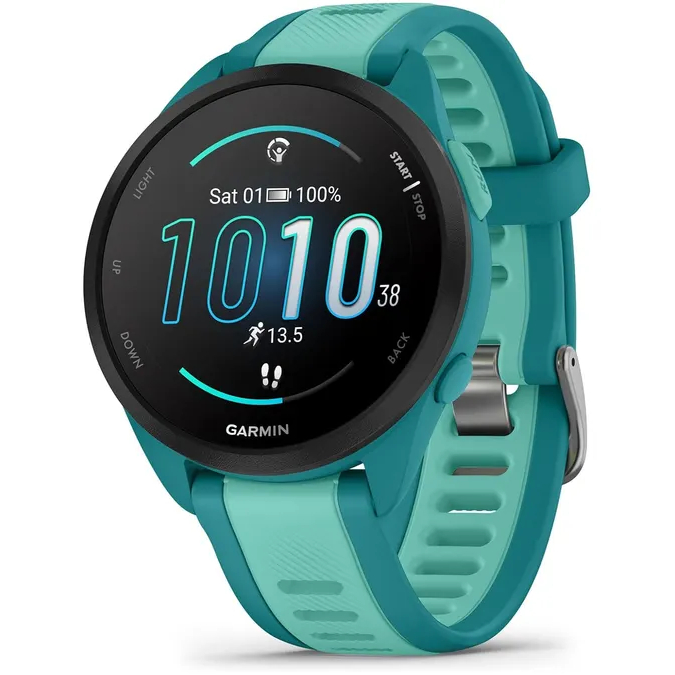
The entry-level AMOLED watch in Garmin’s sports watch range offers a lot of impressive features to runners in particular, and has a slick user interface plus useful smart features. It’s a little pricier than the Suunto Run, and lacks the dual-band GPS you get on the Suunto.
Pros
- Polished user interface
- Links to music streaming services
- Reliable sports tracking
Cons
- More expensive than Suunto Run
- Limited training analysis
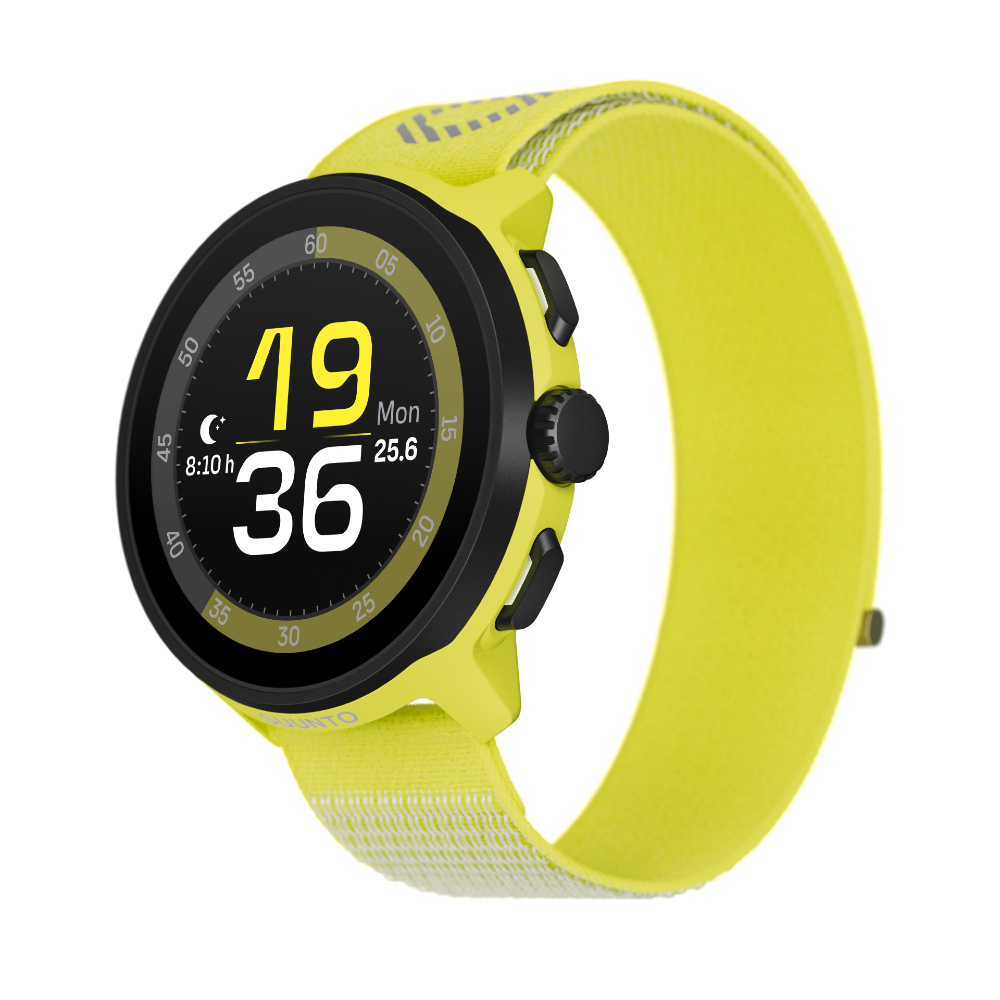
Suunto’s entry-level running watch undercuts the competition, including the Forerunner 165, and offers great sports features including extensive training analysis and dual-band GPS. Its smart features are limited though, and it’s not as good a fitness tracker as the Forerunner 165.
Pros
- More affordable than Forerunner 165
- Dual-band GPS
- Detailed tracking and training analysis
Cons
- Music storage is MP3 files only
- Less reliable HR accuracy than Forerunner 165
The Suunto Run and Garmin Forerunner 165 are both among the best running watches available, offering great value in particular as the entry-level AMOLED options in the Suunto and Garmin ranges.
While the Forerunner 165 offers a more polished user experience and better smart features, the Suunto Run has a more extensive array of sports tracking features, including dual-band GPS, and comes in cheaper than the Forerunner 165 on MRSP.
I’ve tested both watches individually and worn them at the same time for the past week to track my runs and other workouts. I’ll cover the key differences I’ve noticed between the two watches below, and for more information on them check out our Garmin Forerunner 165 review and Suunto Run review.
Garmin Forerunner 165 vs. Suunto Run: Price
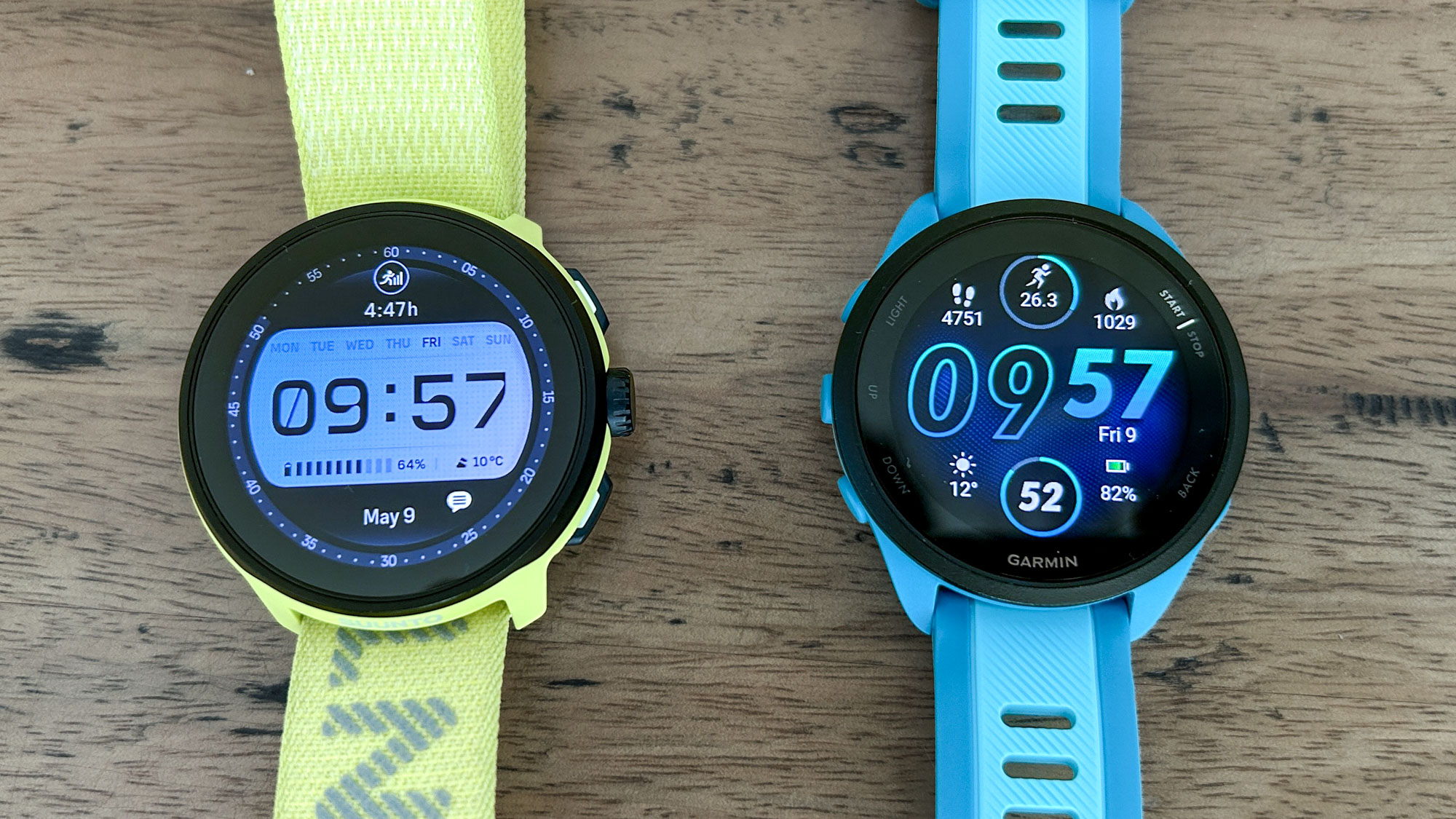
The Garmin Forerunner 165 launched in February 2024 and costs $249.99 / £249.99 for the standard version of the watch and $299.99 / £289.99 for the Garmin Forerunner 165 Music.
It’s more expensive than the Suunto Run, which launched in May 2025 and only comes in one model that costs $249 / £199 and has music storage. However, the Forerunner 165 is now often in sales that bring the price down to $249 for the music model, matching the Suunto Run’s price.
Winner: Suunto Run
Garmin Forerunner 165 vs. Suunto Run: Specs
| Row 0 - Cell 0 | Suunto Run | Garmin Forerunner 165 |
Price | $249/£199 | $249.99/£249.99; $299.99/£289.99 (Music) |
Size | 46 x 11.5mm | 43 x 11.6mm |
Display | 1.32in 466 x 466 AMOLED | 1.2in 390 x 390 AMOLED |
Bezel | Steel | Polymer |
Screen | Gorilla glass | Glass |
Weight | 36g | 39g |
Water resistance | 50m | 5ATM |
Battery life (watch mode) | Up to 12 days | Up to 11 days |
Battery life (GPS) | Up to 20 hours (dual-band) | 19 hours (all-systems GPS) |
Storage | 4GB | 4GB |
Garmin Forerunner 165 vs. Suunto Run: Design
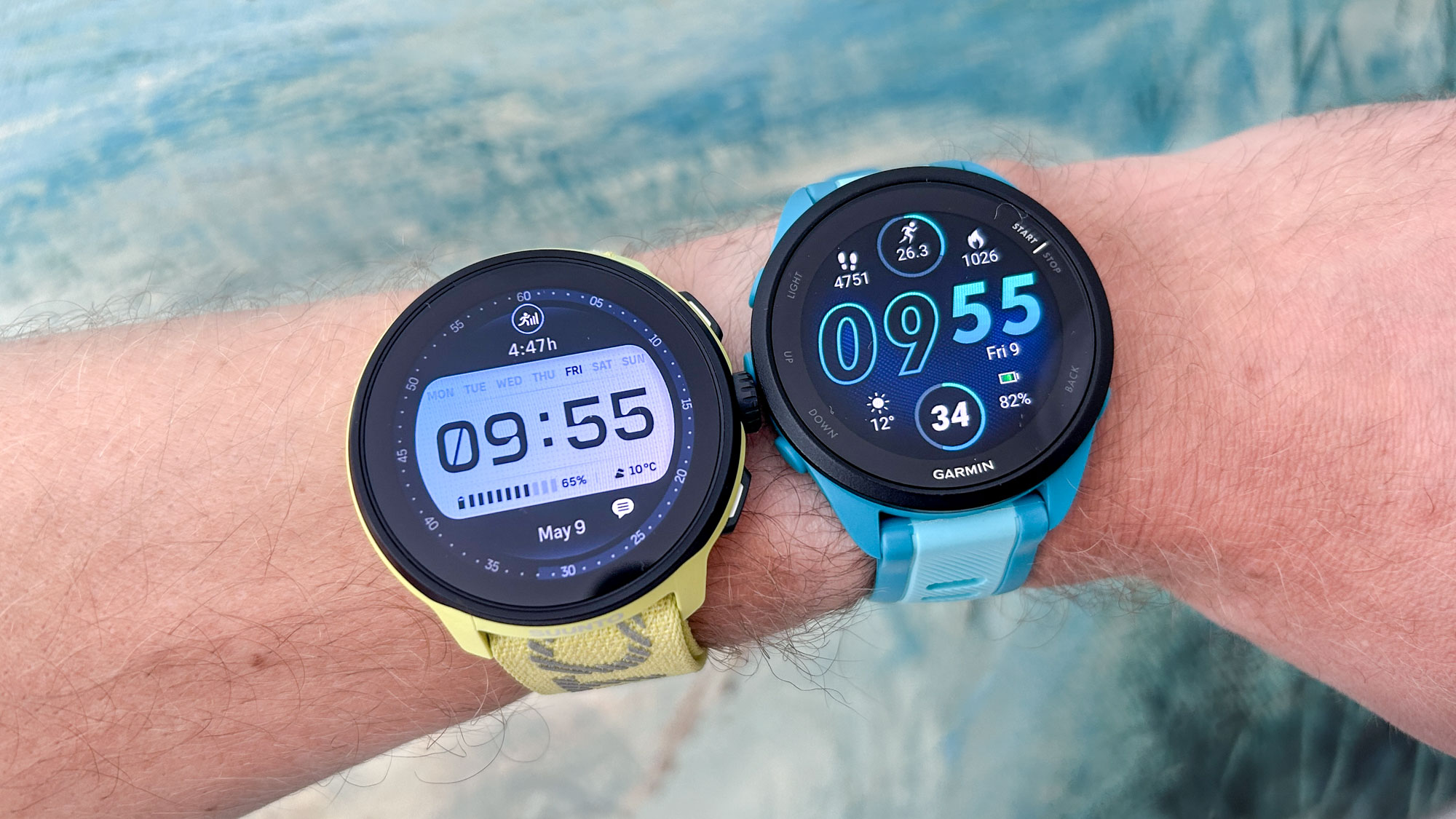
The Suunto Run and Garmin Forerunner 165 are both small, lightweight watches that are comfortable to wear 24/7. The Forerunner 165 is a little smaller than the Suunto, and has a smaller screen at 1.2 inches vs 1.3 inches for the Suunto Run.
Get instant access to breaking news, the hottest reviews, great deals and helpful tips.
Both watches have bright AMOLED displays, but I found the Forerunner 165’s a little clearer and easier to read during runs in bright sunlight. I also prefer the five-button setup on the Garmin to the three buttons on the Suunto, one of which is a dial.
While both watches are mostly made from plastic, the Suunto does have an steel bezel surrounding its screen. Both watches feel well-made and study, and have a more premium look than you might expect for entry-level sports watches.
The Suunto comes with a nylon band as standard, whereas the Garmin comes with a silicone strap. I find the nylon band more comfortable, but both bands can be replaced with third-party straps — the Suunto uses 22mm bands while the Garmin uses 20mm ones.
You get four color options for the Suunto and four for the Garmin Forerunner 165 Music, but just two for the standard Forerunner 165 model.
Both watches have an impressive array of sensors including a pulse oximeter and barometric altimeter, but one advantage the Suunto has is dual-band GPS tracking, whereas the Forerunner 165 only offers all-systems GPS.
Winner: Suunto Run
Garmin Forerunner 165 vs. Suunto Run: Sports tracking & training analysis
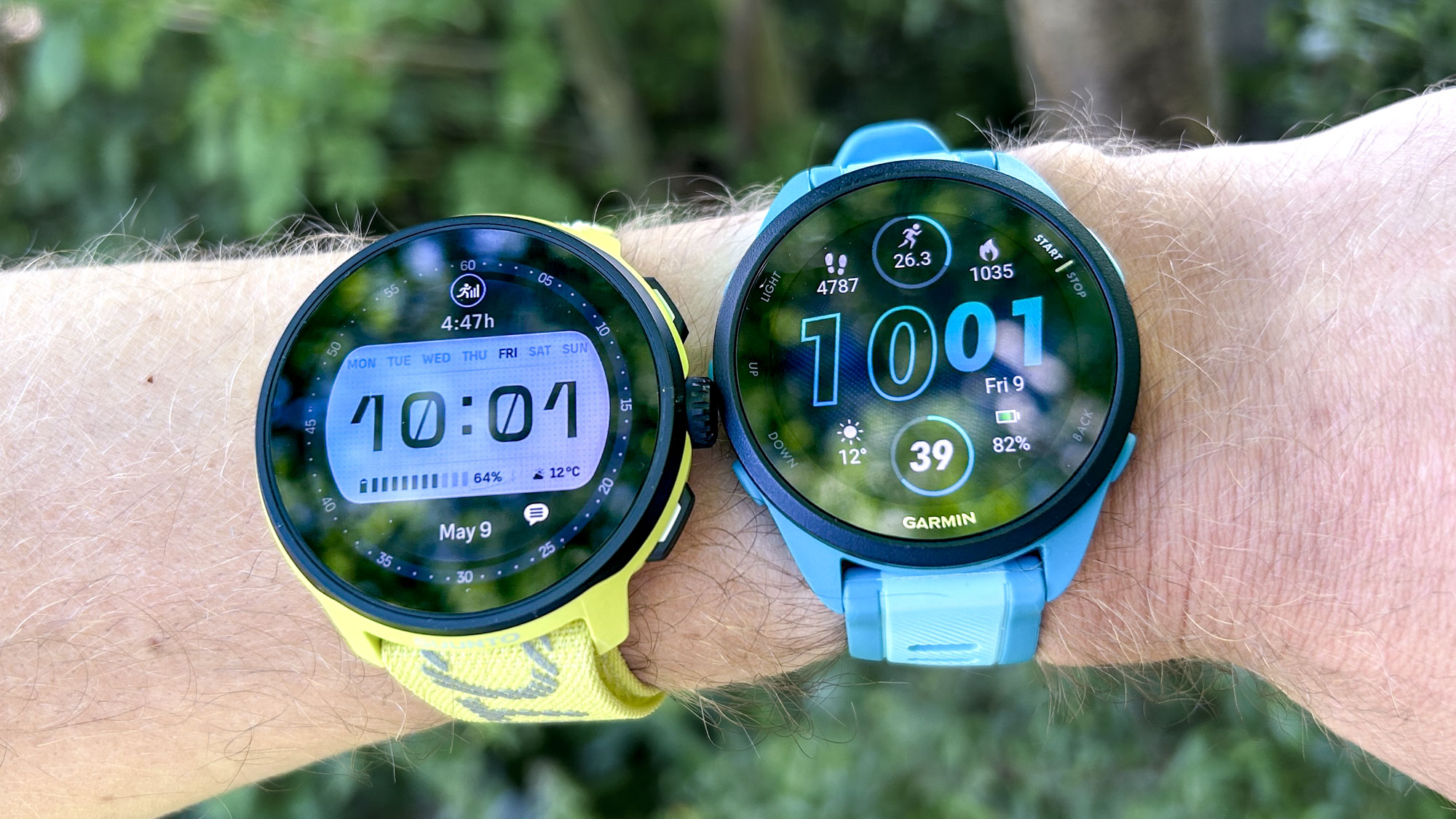
Both watches are mainly designed for running and have dedicated track run modes, but both also offer a lot of other sports modes, including open-water swimming.
While neither has a multisport mode, on the Suunto Run you can switch from one sport to another when you pause an activity, and the watch will record your transition, so it will be more useful to triathletes.
There are more data field customization options on the Suunto Run, in that you can show more stats on your screen during activities — the Forerunner 165 tops out at four, whereas you can adjust six on the Suunto Run.
The Suunto Run also offers a lot more training analysis than the Forerunner 165, and more experienced athletes will enjoy the level of detail you get from the watch compared to the Garmin, which keeps things simple.
You can pair external sensors to both watches, though neither support cycling power meters, but the Forerunner 165 offers connectivity via both Bluetooth and ANT+, whereas the Suunto Run only connects to other devices through Bluetooth.
Winner: Suunto Run
Garmin Forerunner 165 vs. Suunto Run: GPS & HR accuracy

Throughout my testing of both watches I compared their heart rate readings to that of a chest strap, which I always find more reliable than optical sensors on watches.
I checked their GPS accuracy against other watches, including the Garmin Fenix 8, and also by looking over the tracks after my runs.
During my testing I had both watches in their most accurate GPS modes, which is dual-band tracking on the Suunto Run and all-systems tracking on the Forerunner 165, as the Garmin doesn’t offer dual-band.
Despite this, I found that both watches recorded very similar GPS tracks on all my runs, and the pacing stats were also very similar. Both have been reliably accurate for me throughout testing, though in hard GPS conditions such as city centers you might well get better results from the dual-band on the Suunto.

With regards to heart rate accuracy, both matched up to a chest strap’s readings well during bike rides, strength workouts and yoga sessions, but the Forerunner 165 was a little more reliable for me during runs.
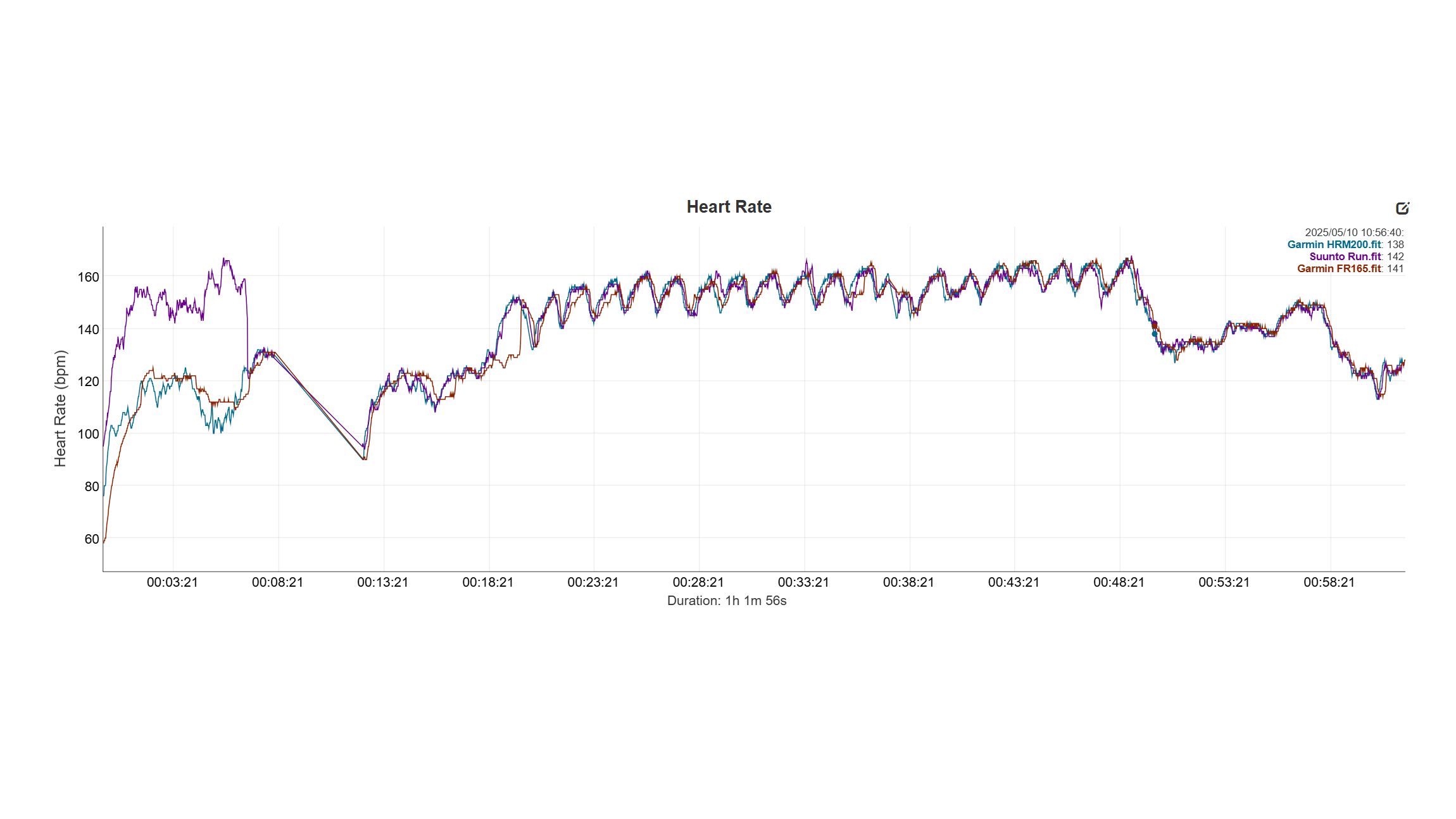
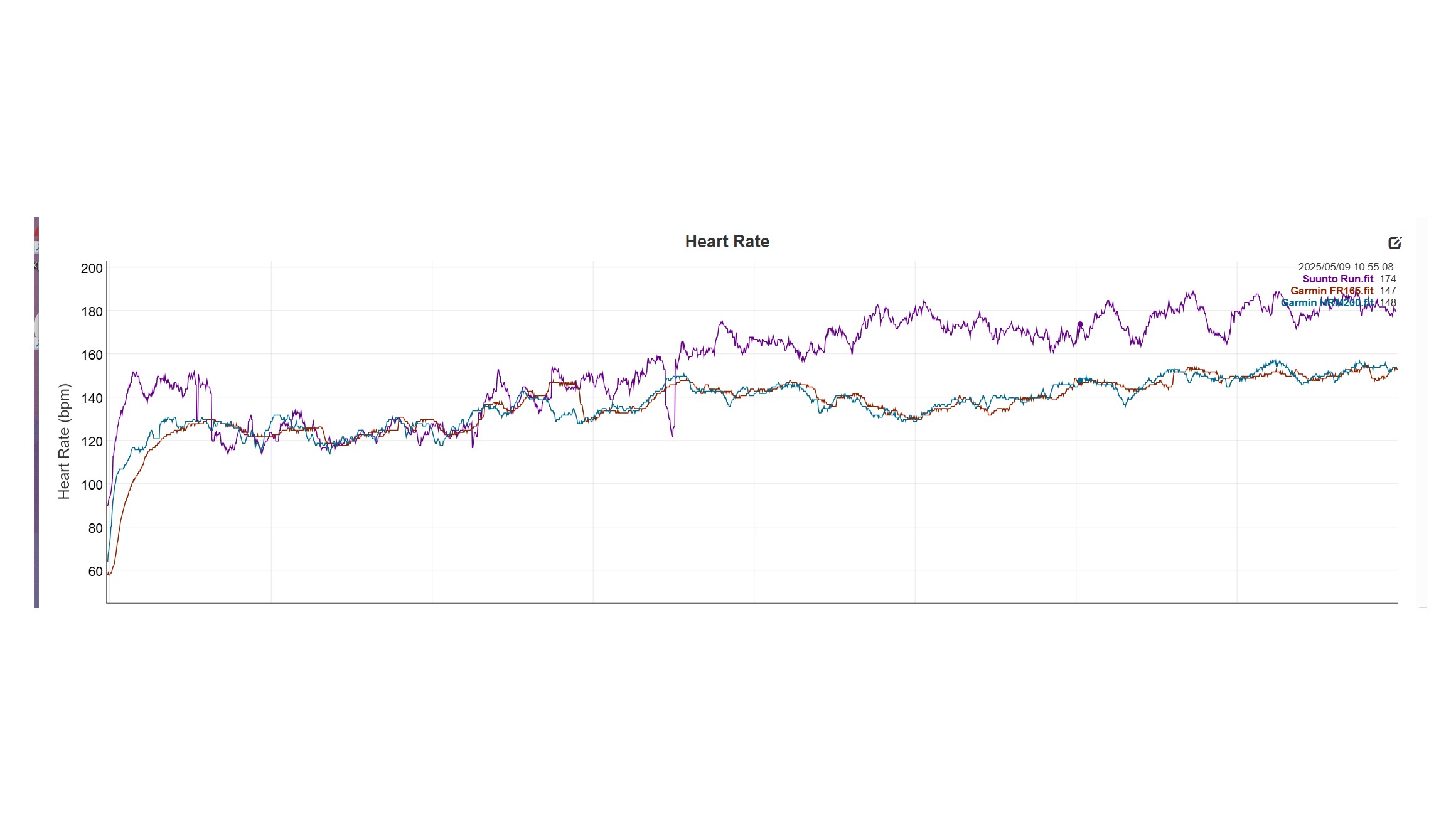
The Suunto Run would sometimes show too high a heart rate, especially at the start of runs, and while it usually eventually locked onto the right heart rate, it was not as quite as accurate as the Forerunner 165 for me.
Winner: Garmin Forerunner 165
Garmin Forerunner 165 vs. Suunto Run: Smart features
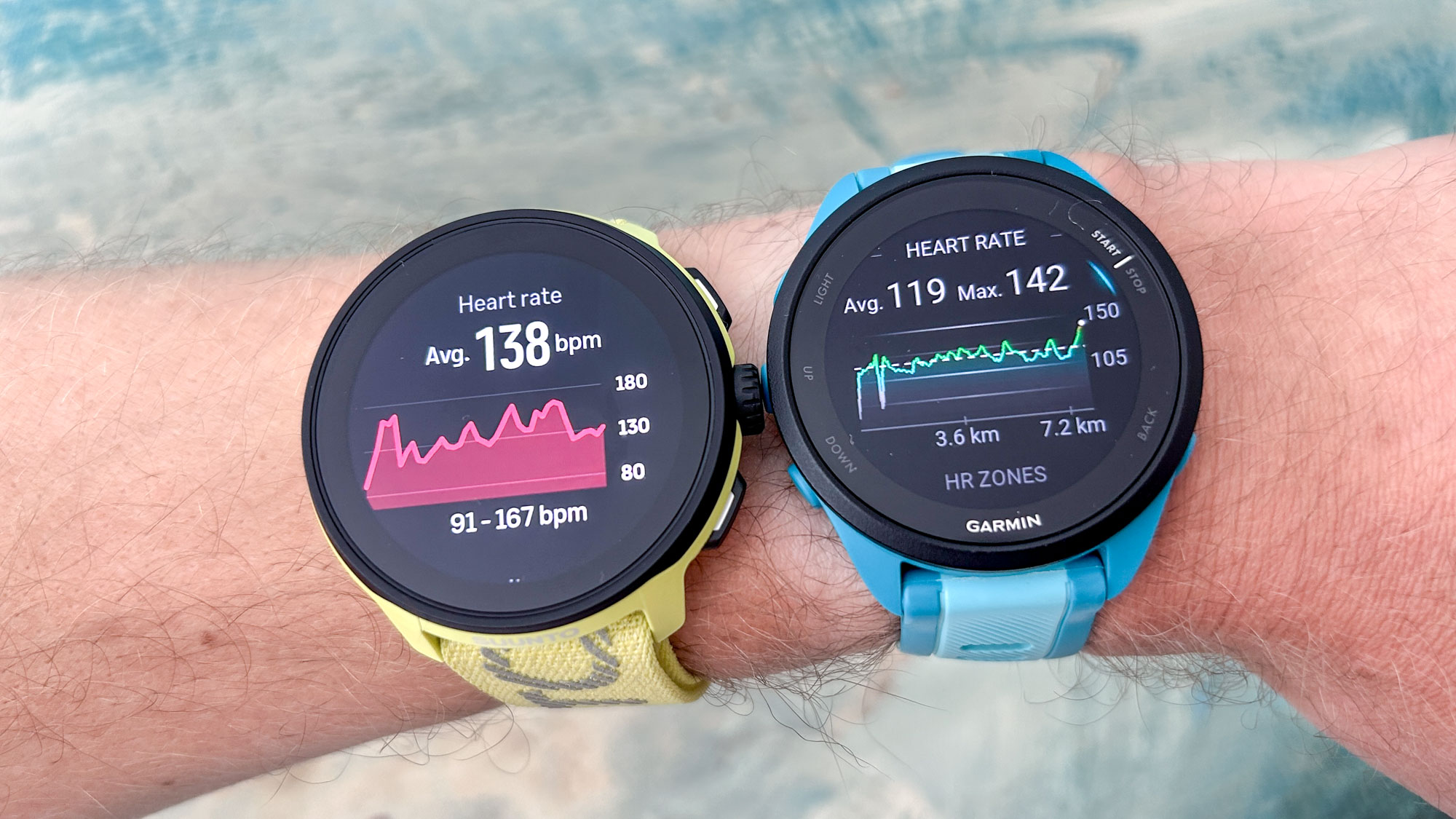
Both watches offer music storage, but this is a better feature on the Forerunner 165, which can link with streaming services like Spotify as well as storing MP3 files. The Suunto Run can only store MP3 files, so if you use a streaming service, the Garmin is the better pick.
The Forerunner 165 also offers NFC payments through Garmin Pay, whereas you can only use the Suunto Run to pay for things in China using Alipay.
Both show notifications from your phone and have a weather forecast widget, but the Forerunner 165 has access to more third-party software through the Connect IQ app store.
Winner: Garmin Forerunner 165
Garmin Forerunner 165 vs. Suunto Run: Battery life
On paper the two watches offer similar battery life at up to 11 days for the Suunto and up to 12 for the Garmin in watch mode, then 20 hours of GPS tracking on the Suunto and 19 hours on the Garmin.
In practice, the battery drained at almost identical rates for me when using both watches at the same time. I had the screens set to always-on, which shortened the battery life considerably, and both lasted me three to four days on a charge when running every day.
Winner: Tie
Garmin Forerunner 165 vs. Suunto Run: Verdict
This is a really tough call, because these are both watches I rate very highly that I’d be happy to use as my daily driver as a keen marathoner.
I prefer the user interface and music storage on the Garmin, which I find easier to use, but the extra training analysis and data fields you get during activities on the Suunto will be important to runners, and the dual-band GPS will also be a big plus if you regularly run in city centers.
If both are at full price I think the Suunto Run is the better way to go, but at the same price the choice will depend on what features you value the most.
More from Tom's Guide

Nick Harris-Fry is an experienced health and fitness journalist, writing professionally since 2012. He spent nine years working on the Coach magazine and website before moving to the fitness team at Tom’s Guide in 2024. Nick is a keen runner and also the founder of YouTube channel The Run Testers, which specialises in reviewing running shoes, watches, headphones and other gear.
Nick ran his first marathon in 2016 and became obsessed with the sport. He now has PBs of 2hr 25min for the marathon and 15min 30sec for 5K. Nick is also a qualified Run Leader in the UK.
Nick is an established expert in the fitness area and along with writing for many publications, including Live Science, Expert Reviews, Wareable, Coach and Get Sweat Go, he has been quoted on The Guardian and The Independent.
You must confirm your public display name before commenting
Please logout and then login again, you will then be prompted to enter your display name.
